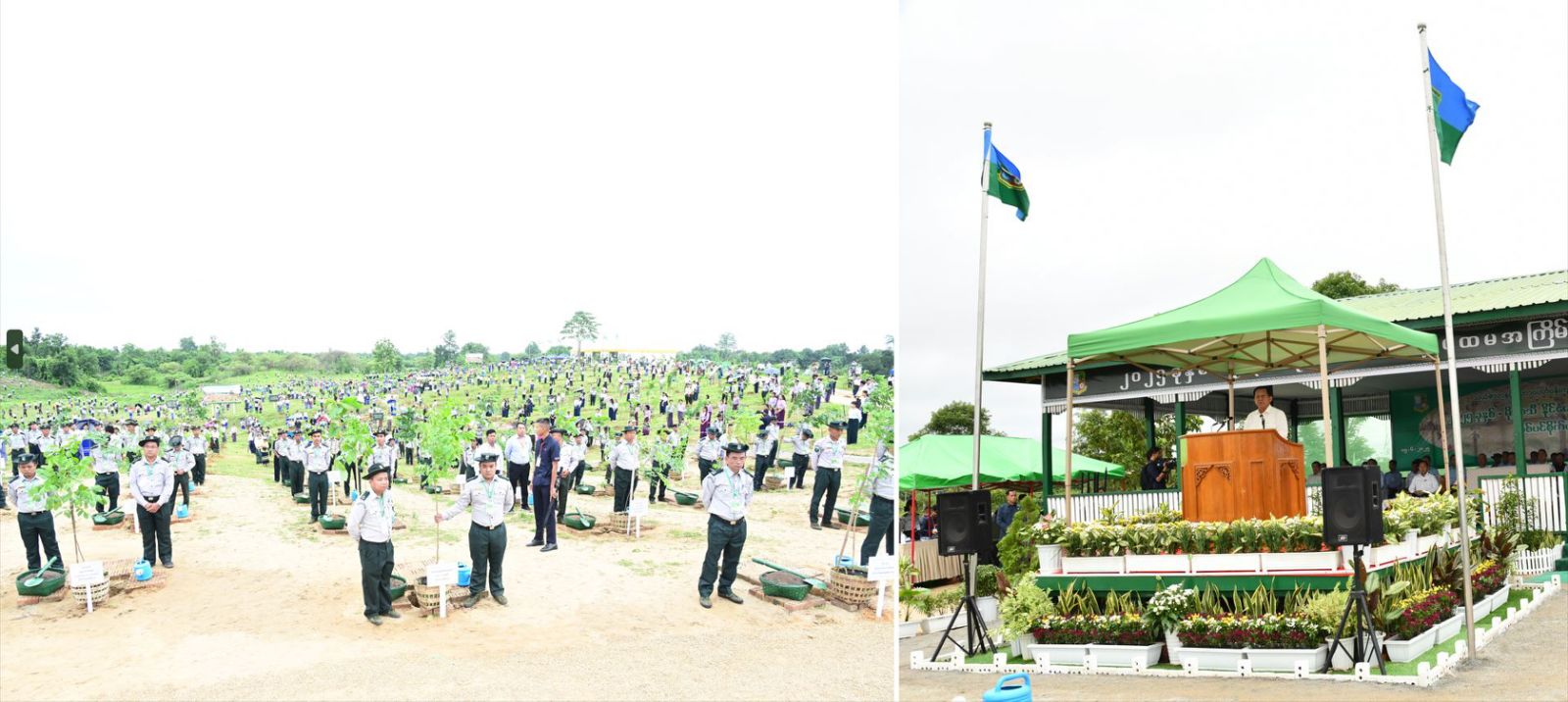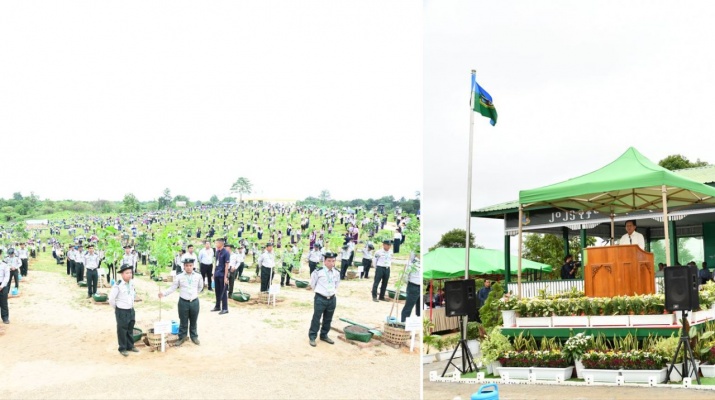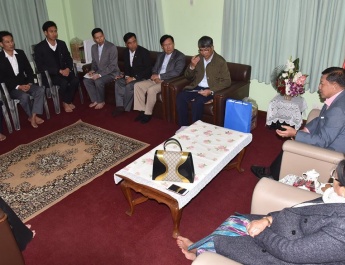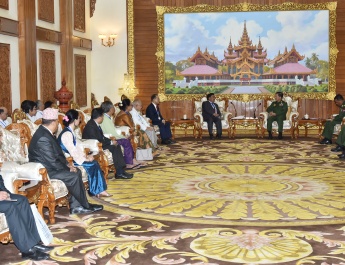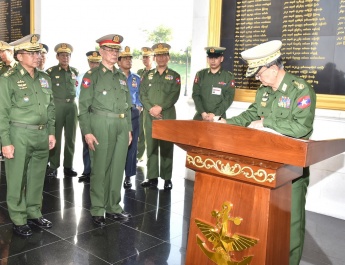Nay Pyi Taw June 15
The first monsoon tree-planting ceremony for 2025 of Nay Pyi Taw, Union Territory took place at Yanaungmyin forest reserve in Dekkhinathiri Township, Nay Pyi Taw, Union Territory this morning. Chairman of the State Administration Council Prime Minister Senior General Min Aung Hlaing took part in the ceremony and planted a gangaw sapling.
Also present at the ceremony together with the Senior General were Vice Chairman of State Administration Council Deputy Prime Minister Vice-Senior General Soe Win, the SAC Secretary, the SAC Joint Secretary, SAC members, union level dignitaries, union ministers, the Nay Pyi Taw Council chair, senior military officers from the Office of the Commander-in-Chief, the deputy ministers, civil servants including officers of the ministries, faculty members and students of Naypyitaw State Academy, Naypyitaw State Polytechnic University, Govern-ment Technical Institute (Nay Pyi Taw), Forestry and Environmental Science University and officials.

First, the Senior General delivered an address. He said the government is organizing annual monsoon tree-planting ceremonies with public involvement. Likewise, regions and states are also doing the same area wise and department wise. Awareness of and active partici-pation of the public in greening and beautifying the environment, ensuring sustainability of forest resources, improving the ecosystem, providing natural disaster protection through conservation of forest, land and mountains, improving the climate and planting and protecting trees is essential. Monsoon tree-planting movements are being held in the entire country as a campaign to realize the abovementioned goals. Todays’ ceremony will grow 3,000 saplings of 16 different species.
Trees and forests are crucial for life on this planet. Apart from releasing oxygen, the main requirement for life including humans, they are also helpful for weather pattern rotation and absorb carbon dioxide, which is harmful for health,
from the atmosphere. Trees are constantly supportive of the ecosystem balancing services through a balanced climate and natural disaster prevention and soil and water conservation.
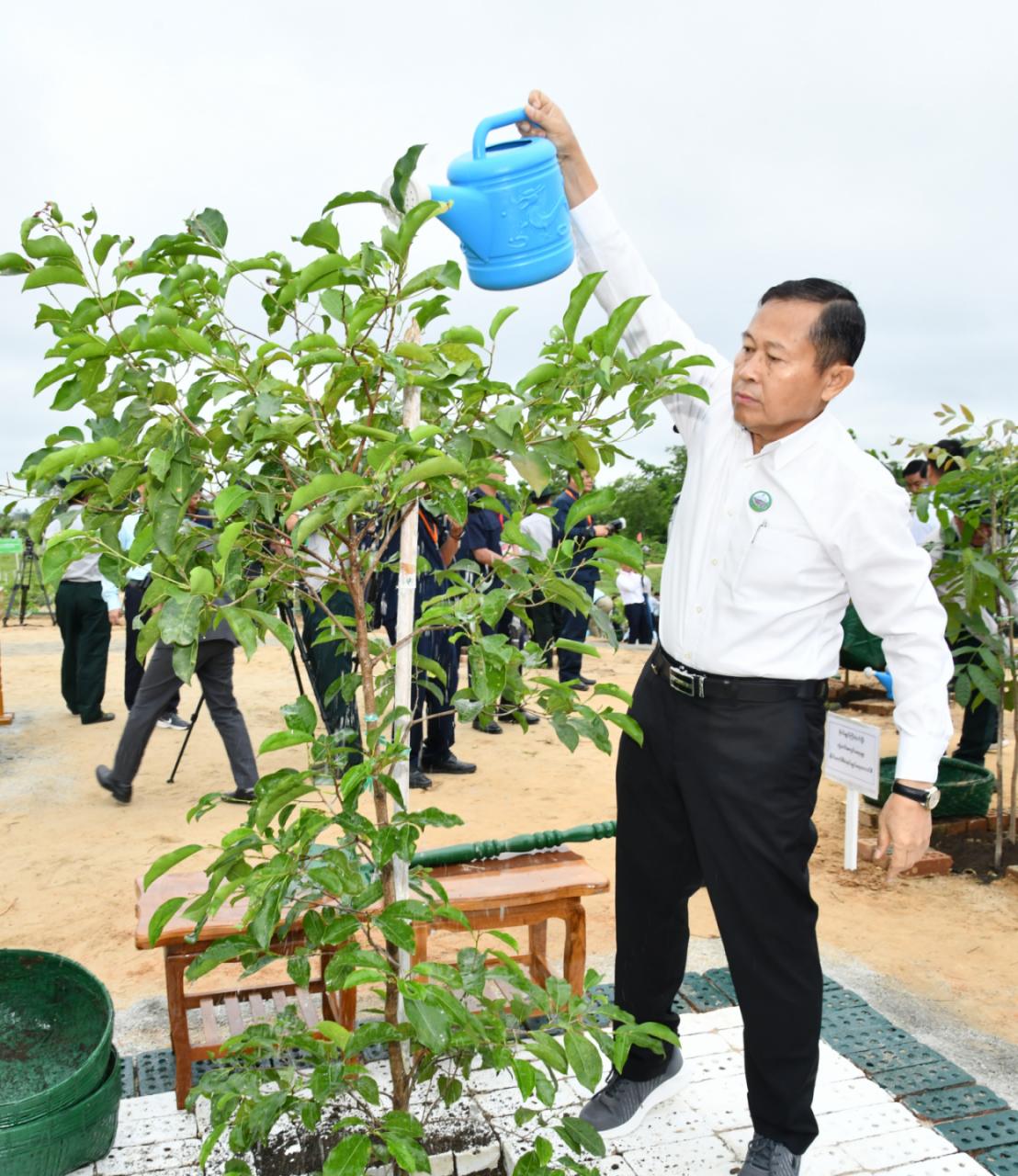
Forests provide various kinds of forest products, such as wood, fuel, bamboo, rattan, food, medicine and other basic requirements for rural people. Tree-growing and conservation has a lot of benefits as trees help improve soil, water and weather conditions, and provide raw materials and inputs for farming, industry and services industries and other environmental services.
Trees are vital to the regulation and stability of ecosystems, acting as a core component. Hence, they must have a significant role in national development. Global countries are accelerating their forest plantation and conservation activities for the success of UN sustainable goals, sustainability of humans and life, and environmental greening and beautification. The goal under the United Nations Strategic Plan for Forests is to increase global forest area by 3 percent by 2030, which translates to roughly 300 million acres, from the 10 billion acres of forest area in the year 2000.
Myanmar is rich in land, water, and natural resources and biodiversity. Of the ASEAN countries, it has a good forest cover which is the second largest in the region. Myanmar’s forest cover was 42.92 percent of its land area in 2015, 42.19 percent in 2020 and 42.15 percent according to the initial report in 2025, showing a slight forest depletion. Since its assumption of the responsibilities, SAC has been prioritizing tree-plantation, forest conservation and management, and the nation sees a significant decrease in annual forest depletion.
The goal for national forest cover is set at 50 percent of the country’s surface area for a balanced climate and better ecosystem services, and the relevant departments, communities and organizations must take part in realizing it as a national duty.
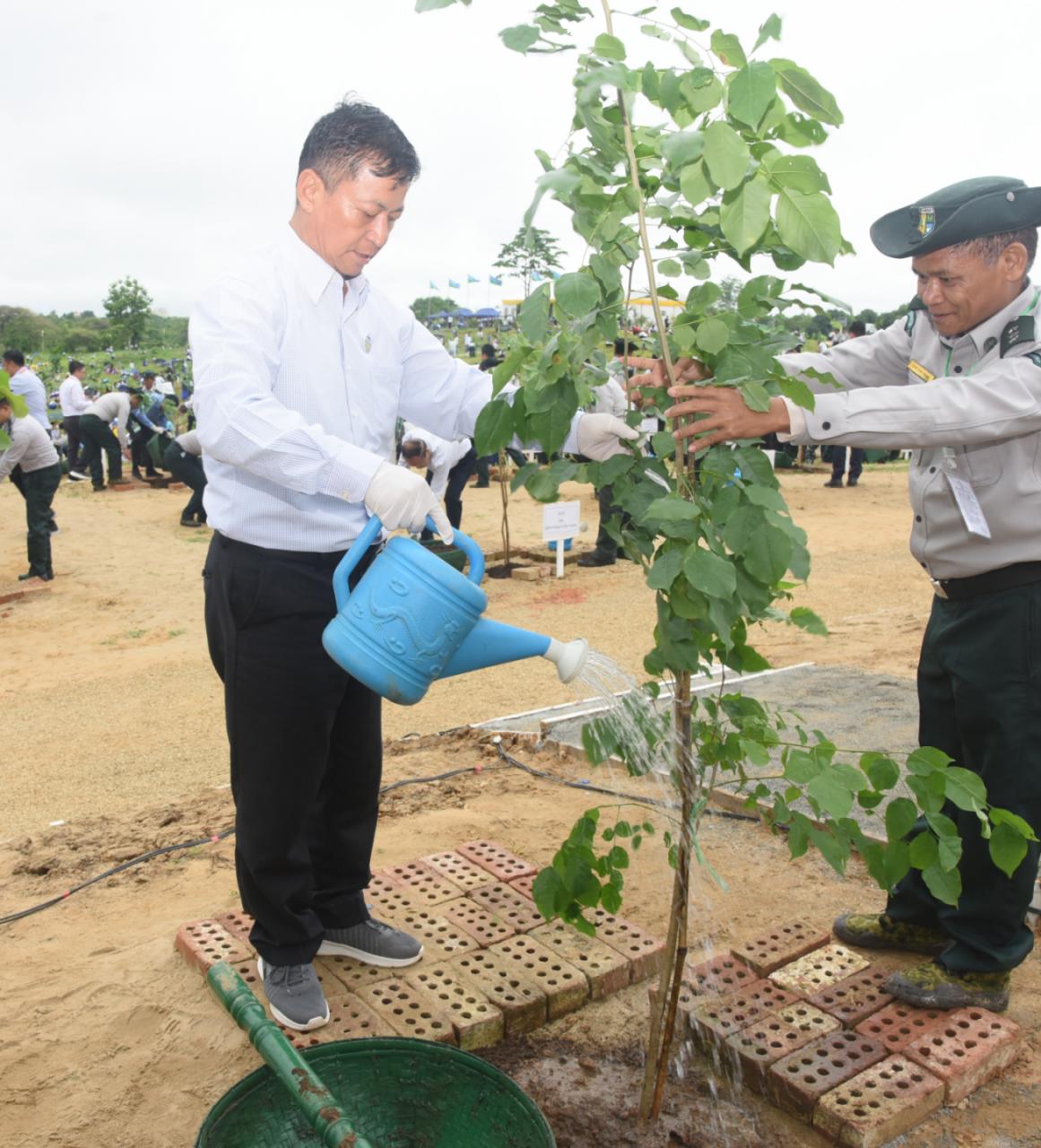
The State has systematically and effectively carried out rescue and rehabilitation efforts when facing natural disasters, while also prioritizing the prevention of such calamities and nationwide greening initiatives. Protecting, managing, restoring, and expanding forest resources are key long-term national priorities.
From the 2021 monsoon season to the 2024 monsoon season, the State distributed and planted over 90.55 million saplings across the nation. In Nay Pyi Taw, nine tree-planting ceremonies were held under my leadership, resulting in 3,209,703 trees planted, with a 94 percent survival rate (3,032,982 trees). These trees were planted not only in protected forest reserves but also in non-forest areas through community-led monsoon campaigns. To ensure full survival, collective maintenance efforts are urged. This monsoon season, 20.59 million saplings (over 2 feet tall) have already been distributed nation-wide for planting.
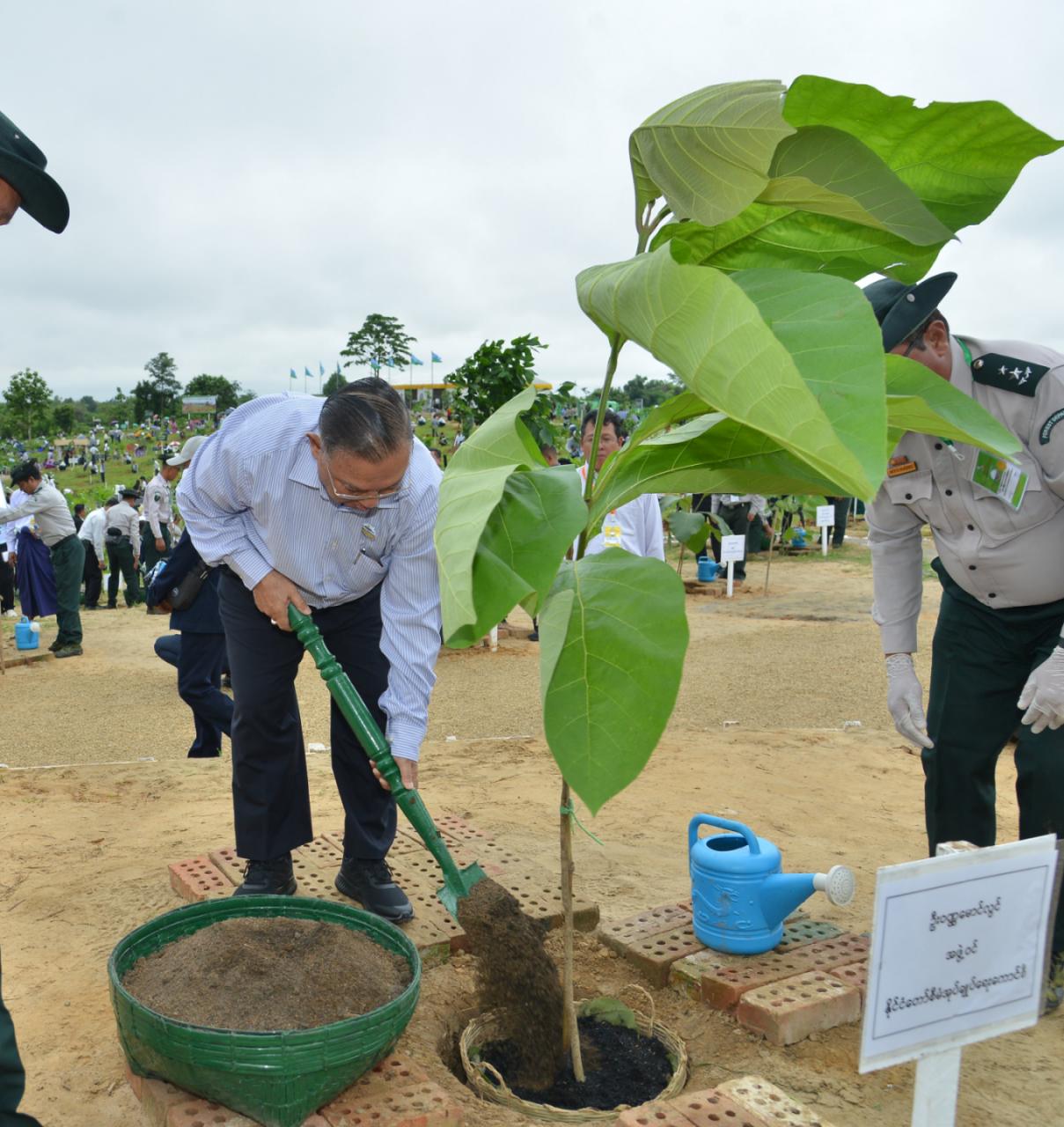
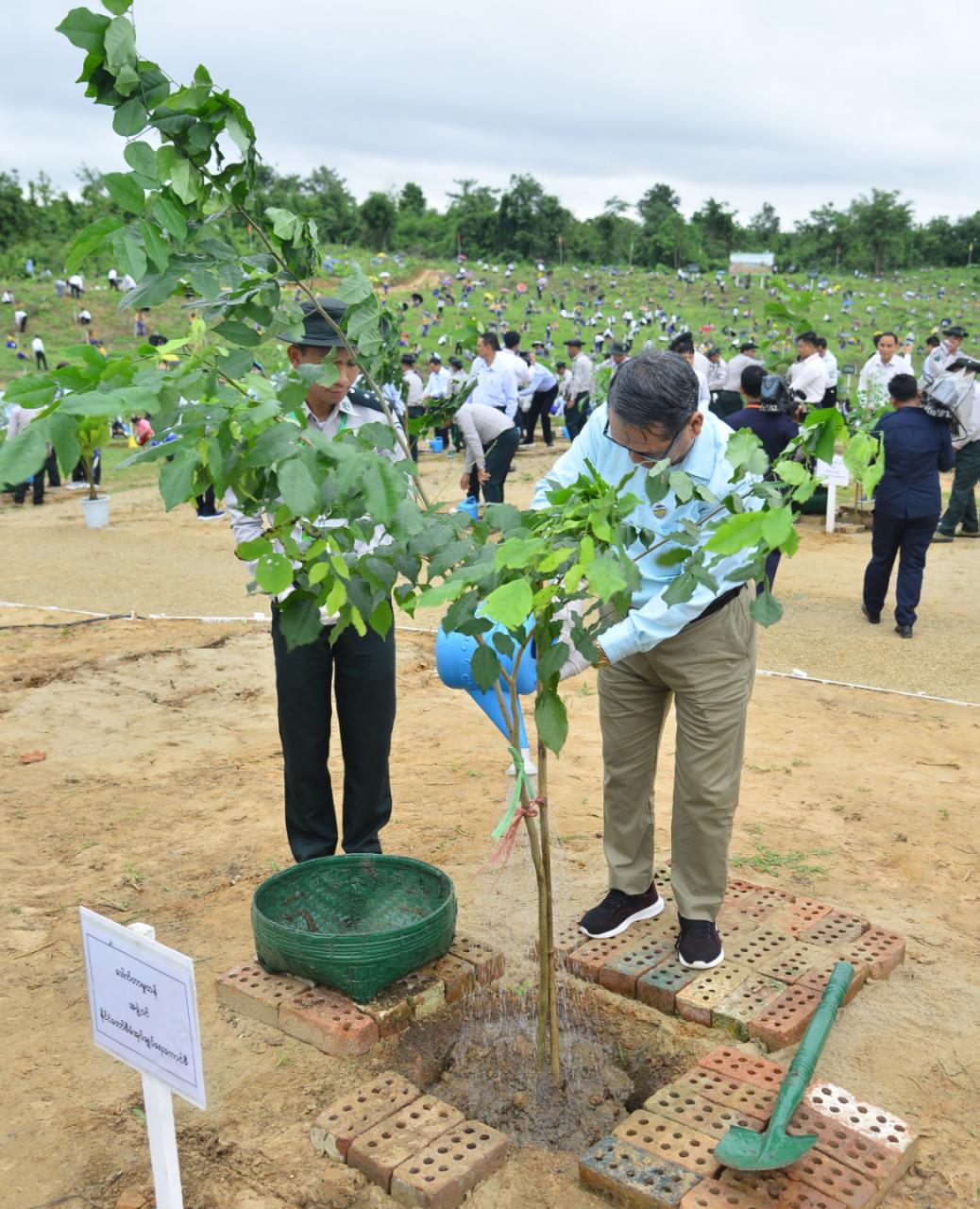
The State is implementing various greening initiatives, including establishing roadside green belts, planting trees along riverbanks, conducting afforestation along highways and railways, conserving man-grove forests, developing “two acres per village” agroforestry projects in 13 tropical districts, creating community fuelwood plantations, executing greening projects in the ancient Bagan cultural zone, and conducting reforestation in the areas flooded due to cyclone Yagi.
The government promotes the concept of “A Tree at Every Home, a Forest Belt Around Every Village,” encouraging all citizens to actively participate in greening urban and rural areas to ensure shade and a healthy environment. The principle “Plant to Survive, Nurture to Grow, Preserve to Sustain” must guide afforestation efforts. Protecting forests—our natural heritage—is vital for passing down a green, prosperous nation to future generations.
Forests play a crucial role in national sustainable development, food security, socio-economic progress, and maintaining a clean environment and healthy ecosystems. Thus, the State is increasing investments in the green economy, which will expand forest cover, enhance environmental protection, and deliver social, economic, and ecological benefits. To boost forest coverage, mitigate climate change, and prevent natural disasters, tree planting and conservation must be treated as a national duty requiring collective participation.
Next, the Senior General ceremonially planted a Gangaw tree at the designated site. Other attendees—including Vice-Senior General Soe Win, Council Secretary, Joint Secretary and members, Union level officials, Union ministers, invited dignitaries, students, and departmental personnel and officials from various ministries —joined in planting saplings simul-taneously.
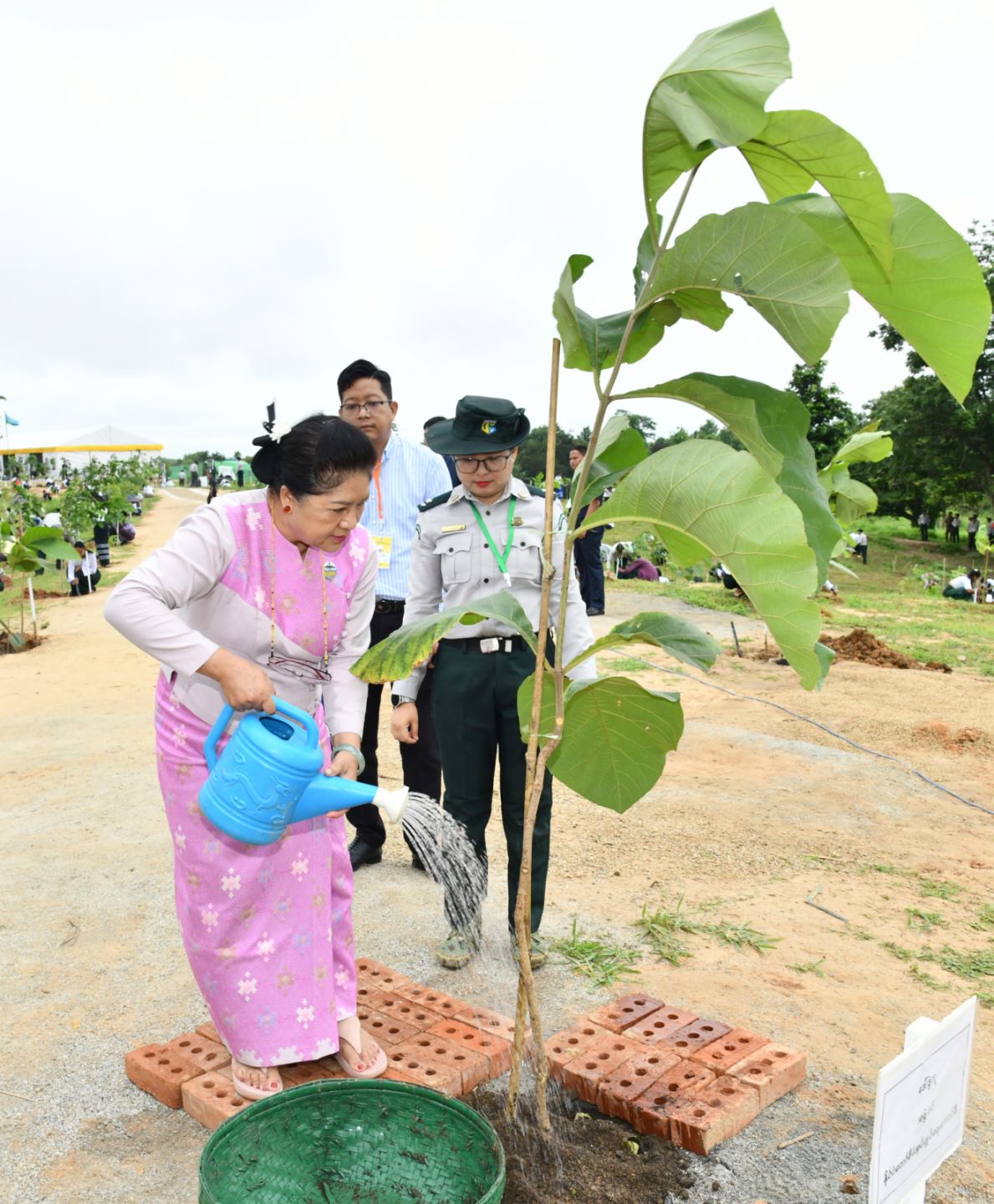
Then, the Senior General went round and encouraged the participants.
The ceremony featured the planting of 3,000 saplings of 16 different species.
After the tree-planting cere-mony, the Senior General and his entourage visited Uttarathiri Dam to assess ongoing repairs for soil cracks and seepage iss-ues. Union Minister for agriculture, Livestock, and Irrigation U Min Naung, along with Nay Pyi Taw Council chairman and officials, provided updates on water inflow pathways, geological surveys for embankment restoration, and soil testing progress. The Senior General emphasized the need for systematic pre-repair inspections, durable long-term solutions, and proper follow-up measures to ensure the dam’s structural integrity. He directed officials to implement these repairs with careful attention to quality and sustainability and left other necessary instructions.
